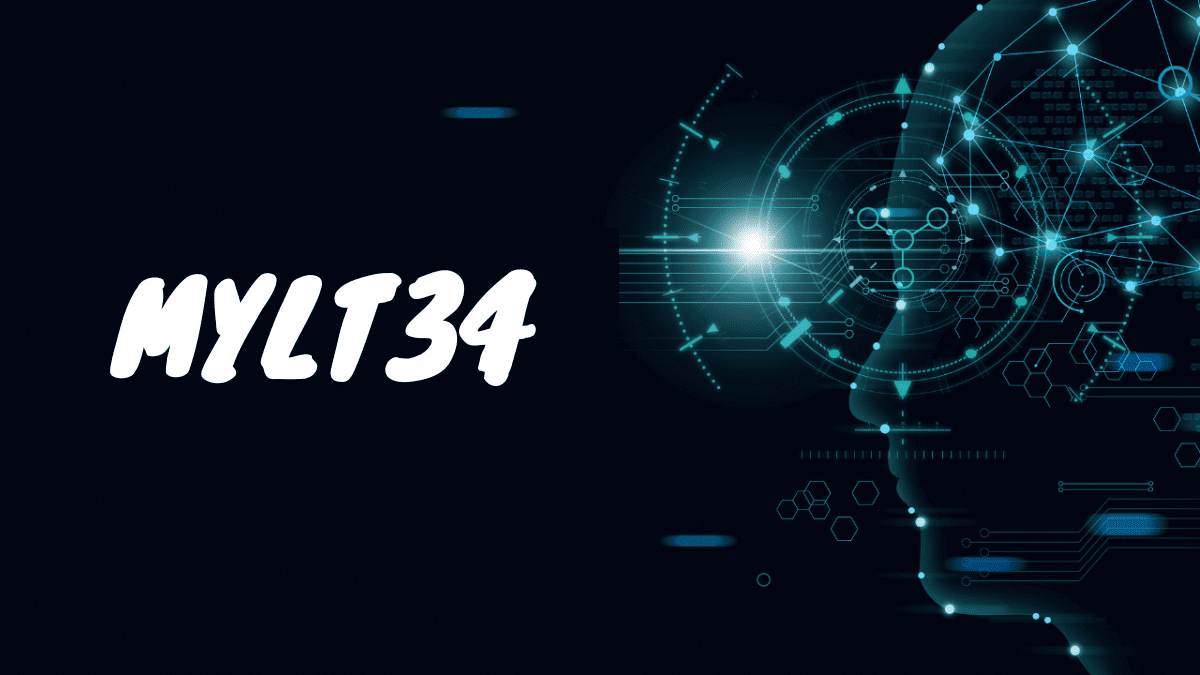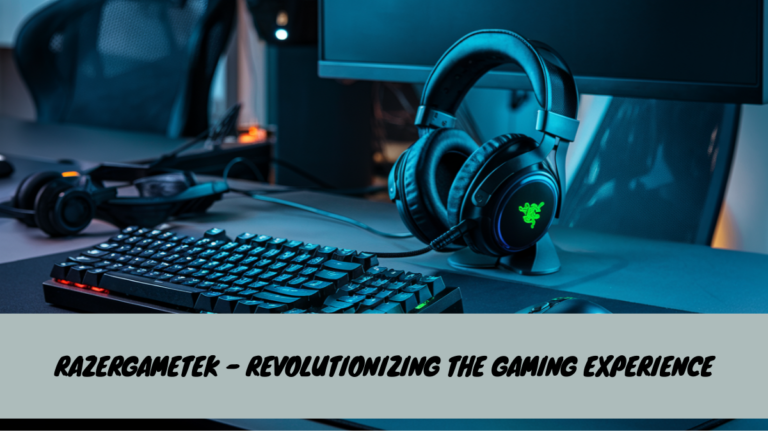MYLT34 – A Revolutionary Technology in the Field of Robotics
Introduction
In recent years, the field of robotics has seen significant advancements, with cutting-edge technologies pushing the boundaries of what was once thought possible. One such technology that has been making waves in the industry is MYLT34. This innovative system has revolutionized the way robots interact with their environment, paving the way for a new era of intelligent and adaptive machines.
In this comprehensive article, we will explore the intricacies of MYLT34, its applications, benefits, and its impact on the future of robotics. Whether you’re a robotics enthusiast, a professional in the field, or simply curious about the latest technological advancements, this article will provide valuable insights into the world of MYLT34.
1. What is MYLT34?
Definition and Overview
MYLT34 is a state-of-the-art robotic system designed to enhance the interaction between robots and their environment. It combines advanced sensors, machine learning algorithms, and adaptive control systems to create robots that can intelligently respond to changes in their surroundings. This level of adaptability and intelligence marks a significant leap forward from traditional robotic systems.
History and Development
The development of MYLT34 began in the early 2010s, driven by the need for more sophisticated robotic solutions in various industries. Researchers and engineers focused on creating a system that could not only perform predefined tasks but also learn and adapt to new situations. The result was MYLT34, a groundbreaking technology that has since become a cornerstone of modern robotics.
2. How MYLT34 Works
Technical Specifications
At the heart of MYLT34 is a combination of advanced hardware and software components. The system includes high-precision sensors that gather data about the robot’s environment, powerful processors that analyze this data in real-time, and machine learning algorithms that enable the robot to make intelligent decisions.
Key technical specifications include:
- Sensors: High-resolution cameras, LIDAR, and ultrasonic sensors
- Processing Unit: Multi-core processors with dedicated AI accelerators
- Software: Machine learning algorithms for pattern recognition and decision-making
- Connectivity: Wireless communication for remote monitoring and control
Key Features
MYLT34 is equipped with several key features that set it apart from traditional robotic systems:
- Adaptive Learning: The system can learn from its experiences and improve its performance over time.
- Real-Time Processing: MYLT34 processes data in real-time, allowing for immediate responses to changes in the environment.
- Versatility: It can be integrated into various types of robots, from industrial machines to consumer devices.
- Safety: Enhanced safety features ensure that the robots can operate in close proximity to humans without posing risks.
3. Applications of MYLT34
Industrial Automation
In the realm of industrial automation, MYLT34 has proven to be a game-changer. It enables robots to perform complex tasks with precision and efficiency, reducing the need for human intervention. Key applications include:
- Assembly Lines: Robots equipped with MYLT34 can handle delicate and intricate assembly processes with high accuracy.
- Quality Control: The system’s advanced sensors and real-time processing capabilities allow for thorough inspection of products, ensuring high quality standards.
- Material Handling: MYLT34-powered robots can efficiently manage the movement of materials, optimizing workflow and reducing downtime.
Healthcare
The healthcare sector has also benefited from the integration of MYLT34 into robotic systems. Applications in this field include:
- Surgical Robots: MYLT34 enhances the precision and control of surgical robots, leading to safer and more effective procedures.
- Patient Care: Robots equipped with MYLT34 can assist in patient care, from delivering medications to providing companionship to the elderly.
- Rehabilitation: The system is used in robotic rehabilitation devices that help patients regain mobility and strength after injuries or surgeries.
Consumer Electronics
MYLT34 is making its way into consumer electronics, bringing advanced capabilities to everyday devices. Examples include:
- Smart Home Devices: Robots with MYLT34 can interact with other smart home devices, providing a seamless and intelligent home automation experience.
- Personal Assistants: Robotic personal assistants equipped with MYLT34 can perform a wide range of tasks, from scheduling appointments to answering questions.
- Entertainment: The system is also used in robotic toys and entertainment devices, offering interactive and engaging experiences.
Other Sectors
Beyond the industries mentioned above, MYLT34 has potential applications in various other sectors, including:
- Agriculture: Robots with MYLT34 can assist in tasks such as planting, harvesting, and monitoring crops.
- Logistics: The system can optimize warehouse operations and improve the efficiency of supply chain management.
- Security: MYLT34-powered robots can be used for surveillance and security purposes, enhancing safety in public and private spaces.
4. Benefits of MYLT34
Enhanced Efficiency
One of the primary benefits of MYLT34 is its ability to enhance the efficiency of robotic systems. By enabling robots to learn and adapt, MYLT34 reduces the need for constant human oversight and intervention. This leads to faster and more efficient operations, whether in manufacturing, healthcare, or other industries.
Improved Safety
Safety is a critical concern in the deployment of robotic systems, especially when they operate in close proximity to humans. MYLT34 addresses this concern by incorporating advanced safety features. These include real-time monitoring of the environment, intelligent decision-making to avoid hazards, and fail-safe mechanisms to prevent accidents.
Cost Savings
The integration of MYLT34 into robotic systems can lead to significant cost savings for businesses. By improving efficiency and reducing the need for human labor, companies can lower operational costs. Additionally, the enhanced capabilities of MYLT34-powered robots can result in fewer errors and higher quality outputs, further contributing to cost savings.
5. Comparing MYLT34 with Other Technologies
Traditional Robotics
Traditional robotic systems are typically designed to perform specific tasks based on pre-programmed instructions. While effective in certain applications, these systems lack the flexibility and adaptability of MYLT34. In contrast, MYLT34 enables robots to learn from their experiences and adapt to new situations, making them more versatile and capable.
AI and Machine Learning Integration
MYLT34 stands out for its seamless integration of AI and machine learning technologies. Unlike some robotic systems that use basic automation, MYLT34 leverages advanced algorithms to process data and make intelligent decisions. This integration allows for more sophisticated and autonomous robotic systems that can handle complex tasks with minimal human intervention.
6. The Future of Robotics with MYLT34
Emerging Trends
As MYLT34 continues to evolve, several emerging trends are expected to shape the future of robotics:
- Increased Autonomy: Robots will become more autonomous, capable of performing tasks without human guidance.
- Enhanced Human-Robot Collaboration: MYLT34 will facilitate closer collaboration between humans and robots, improving productivity and safety.
- Broader Adoption: The technology will become more accessible, leading to wider adoption across various industries and applications.
Potential Challenges
Despite its many benefits, the deployment of MYLT34 is not without challenges. These include:
- Technical Complexity: The advanced nature of MYLT34 requires specialized knowledge and expertise for implementation and maintenance.
- Cost: While the technology can lead to long-term cost savings, the initial investment can be significant.
- Ethical Considerations: The increasing autonomy of robots raises ethical questions about job displacement and the role of robots in society.
7. FAQs
What makes MYLT34 different from traditional robotic systems?
MYLT34 differs from traditional robotic systems in its ability to learn and adapt to new situations. Traditional robots follow predefined instructions, whereas MYLT34-powered robots use advanced sensors and machine learning algorithms to make intelligent decisions in real-time.
How can MYLT34 improve safety in robotic systems?
MYLT34 enhances safety through real-time monitoring, intelligent decision-making, and fail-safe mechanisms. The system continuously analyzes the environment and adjusts the robot’s actions to avoid hazards, ensuring safe operation in various settings.
What industries can benefit from MYLT34?
MYLT34 has applications in a wide range of industries, including industrial automation, healthcare, consumer electronics, agriculture, logistics, and security. Its versatility and adaptability make it suitable for various tasks and environments.
What are the potential challenges in implementing MYLT34?
Implementing MYLT34 can be challenging due to its technical complexity, initial cost, and ethical considerations. Organizations need specialized expertise to integrate and maintain the system, and there are concerns about the impact of increased automation on jobs and society.
What is the future of MYLT34 in robotics?
The future of MYLT34 in robotics is promising, with trends pointing towards increased autonomy, enhanced human-robot collaboration, and broader adoption. The technology is expected to continue evolving, leading to more advanced and capable robotic systems.
8. Conclusion
Summary of Key Points
MYLT34 represents a significant advancement in the field of robotics, offering intelligent and adaptive capabilities that set it apart from traditional systems. With its advanced sensors, real-time processing, and machine learning algorithms, MYLT34-powered robots can perform complex tasks with efficiency and safety. The technology has applications across various industries, from industrial automation to healthcare, and promises to shape the future of robotics.







